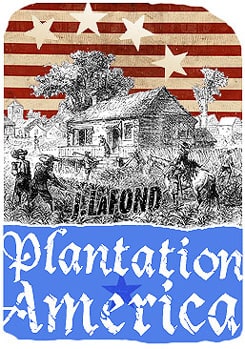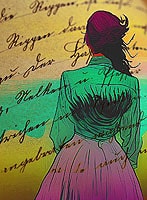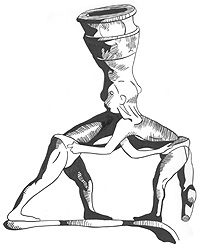The Sources
This website was initially put up to support the activities of Modern Agonistics practitioners. In light of its origin we would be remise in not pointing the way to some available research tools. Our last seminar at a karate school saw us split up into small groups to coach the students. I was the only guy in the room that knew a lot of the historical answers to the questions asked. If my fellow fighters would read just two or three of the books below that would change and make our get-togethers less a lecture by a guy that would rather write or fight, and more of an exchange of ideas.
I did an initial reading on gladiatorial combat in support of my research into Greco-Roman combat sports between 2000 and 2003 for the Broken Dance project. Much of the material was primary and was read in libraries. There was one superb secondary source that I could only find at the library, and for which I possess some notes. Other than that, all of the secondary sources I utilized are still in my possession, in an untidy stack next to my chair. It is mostly a lot of academics rehashing the same stuff, but each book offers something unique.
Below are the particulars along with a capsule review, in the order they fell off of the bookshelves behind me. It will soon become obvious that most of the scholarship has been done by Europeans as have almost all of the practical reconstructions. They are sitting on the remains of it all. Remember the importance of art to research into combat. This might sound a bit artsy to you fighters. However, if you are a real meathead at least it gives you a research tool - just page through the text and read the pictures...
The Sorrows of the Romans: the Gladiator and the Monster, Carlin A. Barton, Princeton University Press, I have no date in my notes and I don't own a copy.
This is a deeply - even frighteningly - insightful work. In this profound study Barton does a better job of crawling through the toxic jungle of the Roman mind than any scholar read for this project.
The Spartacus War, Barry Strauss, Simon & Schuster, 2009
You've seen this guy on the History Channel. He is a real academic who can really write. This book is not about gladiators so much is it is about the most famous gladiator and his war against Rome. If you want to understand why most gladiators settled for a less than 1% chance of surviving their sentence, then this shows you what they faced every time they thought about making a break for it.
Blood in the Arena: The Spectacle of Roman Power, Alison Futrell, University of Texas Press, 1997
A good solidly researched piece that gets into the economic and sacrificial underpinnings of the whole business. If you plan on jumping in a time machine and going back to 100 A.D. to be the Don King of Rome, then take this with you.
Gladiators: 100 BC - AD 200, Stephen Wisdom, Illustrated by Angus McBride, Osprey, 2001
A pretty basic survey of major gladiator types with some notes on recently excavated weapons. Look, anything illustrated by Angus McBride is worth buying. This is probably the best choice for you Neanderthals who actually hit each other with weapons.
The Way of the Gladiator, Daniel P. Mannix, ibooks, 2001
Originally published as Those About to Die in 1958, it is a good read with some inaccuracies. It was a groundbreaking book in its day and I enjoyed it. Just make sure it's not the only one you read. I like the original title better.
The Gladiators: History's Most Deadly Sport, Fik Meijer, Thomas Dunne Books, 2003
This Dutch entry has a very accurate subtitle, some little seen artwork and site photos, and probably gives the best description of the program of events for a day at the arena [the arena is 'the sands', not the building, that was an amphitheatre.] It is a very readable translation and highly recommended.
Emperors & Gladiators, Thomas Wiedemann, Routledge, 1995
A piercing look into the life of the gladiator, including some of the more horrible stuff associated with the events he was featured in. Probably the best look at the social contract aspect of the gladiator's life.
Cruelty and Civilization: The Roman Games, Roland Auguet, Barnes & Noble, 1972
This French entry was written a lifetime ago and is predictably liberal, but was good enough to be picked up by two other publishers, including the bloodthirsty Brits at Routledge. This hardback has a lot of artwork and a nice glossary and focuses a lot on social impact.
Gladiators, Michael Grant, Barnes & Noble, 1967
The standard work in the field by the most prolific author on ancient Greco-Roman civilization is slim and to the point with some very important artwork.
The Gladiator: the Secret History of Rome's Warrior Slaves, Alan Baker, Thomas Dunne Books, 2000
A good read released to cash in on the popularity of the subject ignited by the movie Gladiator. If you can't get a hold of Mannix's book grab this as an intro. It offers nothing unique with only one period piece of art on the cover.
Life, Death, and Entertainment in the Roman Empire, Potter & Mattingly editors, University of Michigan Press, 1999
This is an anthology of academic essays on life in ancient Rome. It is very informative with plenty of translated papyri. The gladiator entry is good and the other material serves well as context.
Spectacles of Death in Ancient Rome, Donald G. Kyle, Routledge, 1998
This is a down and dirty look at the whole process of processing unwanted [most of them] humans in Rome. There are as many footnotes as there is text, which is a good thing if you are doing research.
The World of the Gladiator, Susanna Shadrake, Tempus, 2005
Probably the best overall book in this list; the most comprehensive study I have read, and features a chapter on modern recreation attempts in Europe. This is a must read for any agonistics practitioner.
Gladiators and Caesars: the Power of Spectacle in Ancient Rome, Kohne & Ewigleben editors, University of California Press, 2000
This is a beautiful and well-researched trade-paperback coffee table book, which contains a wealth of artwork and leans on authentically armed and costumed modern gladiators. It has many similarities in format to Shadrake's work and touches on athletics and religion.
The Colosseum, Joseph L. Gardner editor, Newsweek, 1971
This is the kind of nice hardback coffee table book that doesn't get published anymore. It was a useful research tool and a good read, and was very good to have open while I read the smaller academic books.











